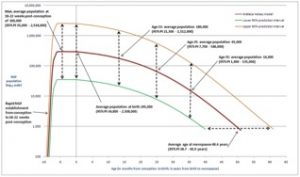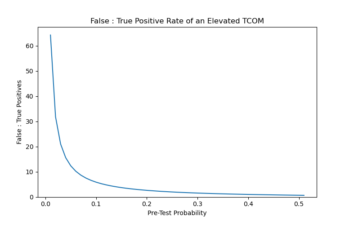Throwing a Little Data on the Media Fire over Maternal Age & Fertility
First off, a belated Happy Father’s Day! (Belated on the Blog because I got to spend Father’s Day with my old man in Boston. Great to see you, Dad!)
Jean Twenge has created a media furore over maternal age & fertility with a cover piece in The Atlantic in which she argues that received wisdom about fertility declines as women age are overblown. While she”s not “wrong”, her rose-hued article blurs the facts.
As always, I’ll try to clarify with some hard data. I’ll start with my best picture of the evidence and then, in Part II, will add some detail on missteps in Ms Twenge’s argument.
Fertility & Maternal Age: The Big Picture
The main confusion for Ms Twenge’s article and many others is that infertility is not 1 problem but a mix of 2 problems. All people, men & women, get less fertile as they age (“age-related infertility”) but some were never fertile to begin with (“sterility”).
~15% of couples are sterile meaning they cannot conceive without some medical intervention. Reasons for this range the gamut from Fallopian tube scarring to sluggish sperm. The other ~85% can have a baby until age catches up with them. The trouble is that no one knows if they’re in the sterile 15% or the fertile-but-aging 85% until they start trying. Some couples never really know despite extensive testing.
For the lucky 85% who are fertile-but-aging, Ms Twenge’s real focus, we can quibble over the numbers (as I will below if you”re curious), but we all agree on the headlines.
- Couples under 32 have little trouble conceiving, in expectation.
- Couples over 40 have a lot of trouble conceiving, in expectation.
- Rates of Down Syndrome and other nasty birthing & baby problems increase rapidly after mothers reach ~35. Down Syndrome risk increases 10-fold from age 30 to 40.
To me, the conclusion is pretty simple. Having a healthy baby after age 35 is harder and riskier but certainly not impossible.
That ~15% chance of lurking sterility is what really complicates things (and is where Ms Twenge errs). She was fortunate to conceive her first child quickly at age 35. But take the average 35 year-old couple in the same situation. If only they knew that they were in the fertile 85%, they could, ignoring the risk of Down Syndrome, etc. (Perhaps I’m biased by many hours working in the NICU, but I think Ms Twenge shamelessly glosses over this risk.), probably wait a few more years and still get a baby. But, if a year goes by with no pregnancy, they start to worry they may be in the unlucky 15%. Suddenly, it”s a race against time (and money) to diagnose and treat the problem before it”s too late.
All fertility treatments, including IVF, work less well as the mother ages. And each cycle of fertility treatment takes a while. So the couple that only realizes at age 39 that they may need fertility treatments faces long odds.

As an unmarried, childless 30-something, I am keenly aware of the time pressures of career/lifestyle/coupling and really wish I could paint a more optimistic picture like Ms Twenge. But nothing has changed. The preponderance of data and doctors” experience agree that waiting too much beyond 35 is a measured risk of both failure to conceive and of birth problems. We all need to weigh those risks for our own situations, and I hope I can shed a little light on your calculus.
If you can’t wait to see more data, Age & Fertility Furore, Part 2 will be right up your alley.
* Note: This was originally posted Jul 2013 from San Francisco and is now reposted after a technical upgrade in Oct 2017.


1 thought on “Age & Fertility Furore, Part 1”
Comments are closed.